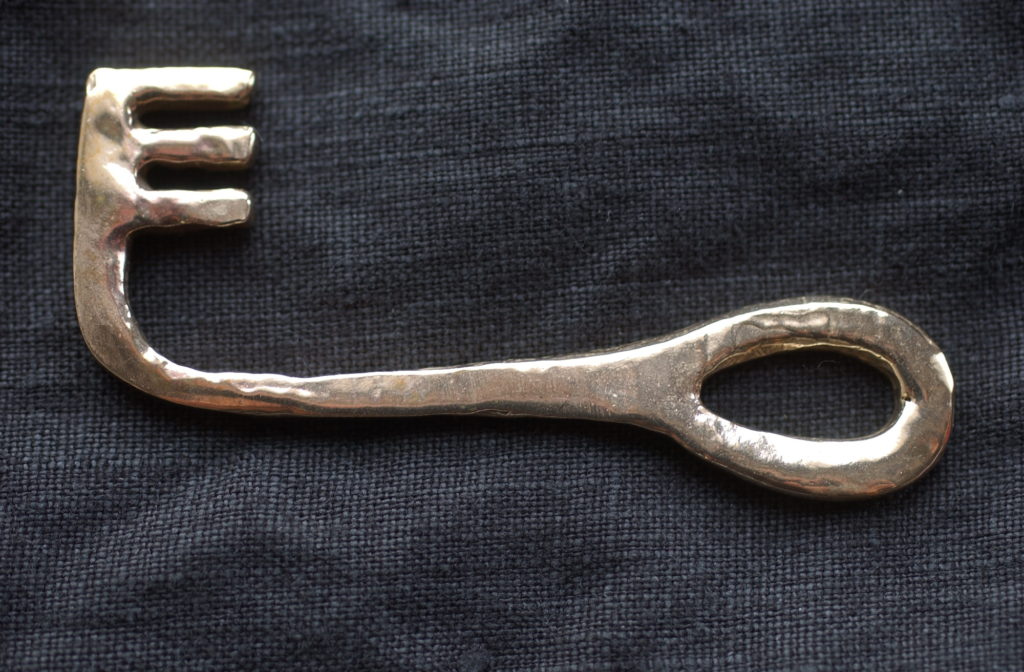Last time I mentioned a “docent fumble” and then promised some insights into looking at museum exhibits.
While I am picking on the Victoria and Albert Museum, let me bring up an issue that all museums deal with. Your labels and information about artifacts are only as good as the people who make those labels. At one visit to the V&A I was scrounging through the old Bronze gallery (the gallery has since been redone). The labels in the gallery had been typed on a typewriter, heaven only knows in what year. (This is a giant “red flag”.) The label on one of the large bronze jugs stated. “There are letters on the jug, but we don’t know what they mean”. The letters? “A M G P”. Probably one of the most common magical incantations of Medieval times – Ave Maria, Gracia Plena (Hail Mary Full of Grace). And to make it worse, some of the other jugs correctly identified what “AMGP” stood for. Consistency folks, consistency. Here is one of my old pictures from the Bronze Gallery – note the wrinkly old typed card.
If I go to a digital online museum collection, almost all of them now have a “let us know that there is a problem with this record” link. Several years ago I started noticing some very serious clerical mistakes at the British Museum website. What I mean by “clerical” is that there might be six pictures associated with a specific artifact, and five are correct, but picture number six is a picture of a different artifact. Sometimes it is super obvious, the item in the picture has a different number on it than the artifact number in the record, or the artifact record is for a piece of pottery and one picture is a piece of jewelry. But sometimes both of the artifacts are of the same type. I remember discovering several clerical mistakes and trying to figure out how to contact someone. Sometimes I found some sort of contact person and sent them an email, and sometimes I finally gave up in frustration. I never received a single reply to any of my emails, not even an auto-responder message.
It really bugged me to see mistakes, so I kept sending messages. My one and only reply came from the Metropolitan Museum Of Art. I was looking at Middle Eastern beads online and I discovered a record for a “necklace”. One look told me that it was a Subha – a prayer bead strand. I found a random contact name and wrote a polite note about the piece. And about a week later I received a very nice email back, thanking me for pointing out the information and assuring me that I was correct, and that the museum was in the process of updating a bunch of records and that this one would be updated to reflect the additional information. It felt so good to know that I had actually reached a person and that the record would be updated!
It was not long afterwards that I started noticing what I think of as “Ooops” buttons, on a lot of museum sites. Links that let you report mistakes to museum staff. I am sure that I was not the only one out there to notice mistakes. I like to think of these buttons as “crowd sourcing corrections”. The more eyes that see a piece the more likely mistakes, or additional information is likely to be discovered.
Next time: Tuning in to Your Museum’s Listings



